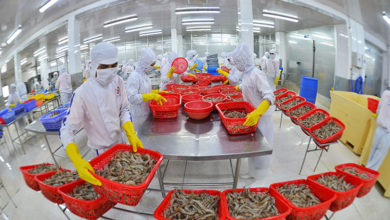World tilapia market fluctuations impact on Vietnamese pangasius?
The tilapia market has undergone significant fluctuations in supply, consumption patterns and prices, especially in major markets like the United States. This changes impact on Vietnam’s pangasius market, posed both both opportunities and challenges.
Drop in Chinese tilapia supply
China has seen a 20% decrease in total tilapia exports in the first five months of this year compared to the same period last year, the lowest levels since the onset of the pandemic.
The reasons for this decline include an unstable market in 2023, fluctuating supply and demand, and prolonged losses experienced by farmers, which have resulted in diminished interest in tilapia farming. Additionally, rising feed costs and adverse weather conditions have further increased production expenses, leading to reduced stocking rates and limited investment in new hatcheries. Although signs of recovery were noted in early 2024, supply remains constrained, contributing to high market prices.

In early September 2024, super typhoon YAGI struck Wenchang, Hainan, and Zhanjiang, Guangdong, causing extensive infrastructure damage that affected power and water supply to farms and processing plants. Power outages lasting weeks hindered tilapia growth in optimal conditions, compromising the quality of exports.
Sharp decline in U.S. tilapia imports
The decline in Chinese tilapia supplies has led to a significant drop in U.S. tilapia imports, further pushing prices upward in the American market. The U.S. primarily imports fresh, frozen, and chilled tilapia fillets. In May 2024, U.S. imports of chilled and frozen tilapia fillets reached their lowest level since the COVID-19 outbreak. Fresh tilapia fillet imports totaled 1,654 tons, a 7% decrease from May 2023, valued at $16.1 million. Frozen fillet imports fell to 6,598 tons, down 22% year-on-year, worth $30.9 million, with 5,742 tons sourced from China.
In the first five months of 2024, fresh tilapia fillet imports decreased by 16%, while frozen fillet imports dropped by 19% compared to the previous year. This marks a decade-low for both fresh and frozen fillet imports, significantly impacting supply and consumption in the U.S. market. As a result of the tight supply from China, the U.S. has increased its imports of fresh fillets from Colombia by 3.5% during the same period. In May 2024, the U.S. imported 677 tons from Colombia, valued at $700 million.
Furthermore, the U.S. reduced tilapia imports from several Latin American countries in the first five months of 2024. Typically, March is peak tilapia consumption season in the U.S., but this year saw the lowest imports in nearly 12 years, with significant drops from major suppliers like Honduras, Mexico, and Costa Rica. As of May 2024, imports from Costa Rica totaled 2,541 tons (down 25%), Honduras saw 182 tons (down 69%), and Mexico provided 86 tons (down 28%) compared to the same period last year. The continued outbreak of streptococcal disease in South American tilapia farms since 2021 has also contributed to these declines.
Brazilian tilapia exports on the rise
In contrast, Brazil has increased its exports of fresh tilapia fillets to the U.S. In the first five months of 2024, Brazil exported 1,614 tons of fresh tilapia fillets, capturing 19% of the U.S. market share. This volume is anticipated to grow in the latter months of 2024. In September 2024, Brazilian tilapia exports reached 1,600 tons, a 17.4% increase from August and a 60.2% rise compared to the same period last year.
With the recent removal of the quarantine certificate requirement for Brazilian tilapia by the U.S., exports are expected to double by 2025. Brazil typically exports around 13,000 tons of chilled tilapia fillets annually. One producer noted they can ship tilapia to the U.S. East Coast for distribution within 48 hours of harvest, currently producing about 20,000 tons of tilapia per year. Brazilian tilapia production is experiencing steady growth, with an 8% increase in 2023 and a projected 7% rise in 2025, aiming to exceed 500,000 tons.
By 2030, Brazil’s annual tilapia production is expected to reach 1.2 million tons, with technological advancements and an abundant supply of feed grains positioning tilapia production to comprise 80% of Brazil’s total aquaculture output by the next decade.
Impact on Vietnamese pangasius
The decrease in tilapia supply from China has resulted in rising prices, presenting a potential opportunity for Vietnamese whitefish, particularly pangasius. However, this opportunity is not limited to Vietnam, as other whitefish suppliers, such as Brazil with its tilapia products, are also eyeing this market.
Vietnamese enterprises should focus on enhancing product quality, investing in technology and production lines, and developing value-added products beyond frozen fillets. Effective marketing strategies should also be employed to promote the nutritious and reasonably priced fish from Vietnam.
According to data from the ITC, from February to August 2024, frozen pangasius fillets surpassed tilapia fillets to become the most consumed whitefish product in the U.S. As of October 15, 2024, Vietnam’s pangasius exports have reached nearly $1.6 billion, representing a 9% increase over the same period in 2023.
VFM






